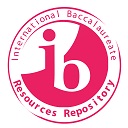Qualitative research methods
ATL: Essential understandings
Qualitative research methods produce descriptive data that is used to gain an understanding of underlying reasons, opinions, and motivations for an individual or group's behaviour.
The goals of qualitative research are different from those of quantitative research.
 The experimental method emphasizes reliability, validity, and generalizability. For a long time, the experiment was the most frequently used method in psychology, and there was little interest in the study of unique and personal human experiences. Eventually, a growing concern about artificiality and lack of ecological validity in research began to emerge, and today, non-experimental methods are seen as a valuable part of modern psychology. Some researchers even combine different research methods in a study in order to collect richer data - a technique called method triangulation. Researchers must carefully consider which methods are most appropriate for the topic under investigation.
The experimental method emphasizes reliability, validity, and generalizability. For a long time, the experiment was the most frequently used method in psychology, and there was little interest in the study of unique and personal human experiences. Eventually, a growing concern about artificiality and lack of ecological validity in research began to emerge, and today, non-experimental methods are seen as a valuable part of modern psychology. Some researchers even combine different research methods in a study in order to collect richer data - a technique called method triangulation. Researchers must carefully consider which methods are most appropriate for the topic under investigation.
Qualitative researchers are interested in how people explain their everyday experiences, and therefore the research takes place in natural settings. The aim of qualitative research is to gain insight into psychological processes such as: How do people work in teams in the workplace? How do people experience major life events, such as the transition to motherhood? How do IB students cope with exam stress?
Qualitative research projects are normally guided by one or more research questions, such as those just mentioned. A research question is different from a hypothesis. A hypothesis is a claim - often derived from theory - that is tested against empirical evidence so that it can be either accepted or rejected. This is called a deductive approach. A research question, on the other hand, is open-ended, and invites detailed descriptions and, if possible, explanations. Qualitative researchers are interested in how people experience situations, so they adopt an inductive approach. When using an inductive approach, researchers do not normally define variables in advance because they think that these are more likely to express the researcher’s ideas than the participant’s. Instead, they first gather the data and then see what these could mean.
The goal of qualitative research is not to identify cause-and-effect relationships, but rather to describe the meanings attributed to events by the research participants themselves. In qualitative research, it is acknowledged that participants’ and researchers’ interpretations of events should be taken into account in the research process; therefore, prediction of outcomes is not a meaningful goal for qualitative researchers. Since the role of the qualitative researchers involves an active engagement in the research process, they also acknowledge a subjective element to the research process, whereas the experimental method is based on the assumption of objectivity in the research process.
In experimental research, description and analysis of data involves the calculation of statistics and interpreting the results with regard to the hypothesis. The qualitative researcher will instead try to interpret and analyze the data in order to find the “meaning”, knowing that there are no definite answers. The analysis of qualitative data is often very time-consuming.
Interviews
 Since the beginning of psychology as a science, researchers have used interviewing as a way of collecting data. Freud, the father of psychotherapy, used clinical interviews to gather data to support his theories. Today, the research interview is one of the most common ways of gathering qualitative data. Interviews can take many forms, and they can vary in time, from a few brief questions to an in-depth interview that takes an hour or more. It is also important to have an interview schedule, which is a plan for conducting the interview. The structure of the interview may follow a tight interview schedule with structured questions or take the form of an informal conversational interview with open-ended questions. According to Hayes (2000), interviewing is a social situation, and the interviewer needs certain skills because of its interpersonal nature - in other words, interviewers need training.
Since the beginning of psychology as a science, researchers have used interviewing as a way of collecting data. Freud, the father of psychotherapy, used clinical interviews to gather data to support his theories. Today, the research interview is one of the most common ways of gathering qualitative data. Interviews can take many forms, and they can vary in time, from a few brief questions to an in-depth interview that takes an hour or more. It is also important to have an interview schedule, which is a plan for conducting the interview. The structure of the interview may follow a tight interview schedule with structured questions or take the form of an informal conversational interview with open-ended questions. According to Hayes (2000), interviewing is a social situation, and the interviewer needs certain skills because of its interpersonal nature - in other words, interviewers need training.
It is necessary for the interviewer to have people skills because it is important to establish a positive relationship with the interviewee (the person who answers the interviewer’s questions). The interviewer must also possess the necessary verbal skills. People are very good at reading non-verbal behaviour and they react to unconscious signs. Therefore, the interviewer should act professionally so that interviewer effects do not interfere with the process. Interviewer effects could be responses to the sex, age, or ethnicity of the interviewer. A well-planned research interview will take factors such as these into account, and the researchers will also keep in mind that people often adjust their responses to what they think is appropriate for the interviewer. The researcher also needs to be aware that most people want to present a positive picture of themselves, so they may not always tell the truth when asked personal questions. This effect is termed the social desirability bias.
Types of interviews
In a structured interview, the interview schedule states exactly what questions should be asked, as well as the order of the questions. The interview procedure is thus highly controlled. In fact, this approach is quite similar to questionnaires, but the difference is that the interviewer asks the questions and may provide some guidance to the respondent. The data gathered in a structured interview are easy to analyze and compare with the data from other interviewees who have been asked the same questions. Because it is highly standardized, it is reasonable to have a large sample size.
On the other hand, structured interviews may appear somewhat artificial in that the interviewer is bound to the interview schedule. The questions that they ask may also seem impersonal or irrelevant to an interviewee.
In an unstructured interview, the interview schedule only specifies the topic and the available time. One advantage of this approach is that it is open to the interests and motivation of the interviewee, so they can reveal more about themselves than in a structured interview. In this sense, the results of the interview may be seen as more valid than a highly structured interview. However, when carrying out interviews with a larger sample, the data may be more difficult to analyze.
Semi-structured interviews are often preferred in modern psychology. A semi-structured interview could look like an informal conversation, but the interview does follow a schedule. The semi-structured interview schedule involves a set of open-ended questions that permit the respondent to answer more freely while maintaining the focus of the interview. Interviewers may also ask additional questions if they feel that there is something of interest that should be explored in more detail.
In addition to how the questions are asked, it is also important for a researcher to decide whether it would be better to do one-on-one interviews or group interviews - called focus groups. Focus groups have many advantages. For example, a group conversation feels much more natural than a one-on-one structured interview. Also, listening to others may actually spark ideas and encourage conversation. From the researcher's point of view, focus groups also save time as several people can be interviewed in a shorter period of time.
As with all methods, there are also limitations of focus groups. Have a strong voice in the group may mean that others feel intimidated and don't contribute to the interview. A good interviewer is able to make sure that the interview is inclusive - that is, all voices are heard. Another result of a strong voice can be conformity effects - that is, people in the focus group simply agree with the ideas of a member of the group.
Observations
 Observation is a data collection method that aims to describe behaviour without trying to establish cause-and-effect relationships. Most observations take place in a natural setting and are called naturalistic observations. However, researchers also perform observations in laboratories - for example, observing mother-and-child interaction through a one-way mirror.
Observation is a data collection method that aims to describe behaviour without trying to establish cause-and-effect relationships. Most observations take place in a natural setting and are called naturalistic observations. However, researchers also perform observations in laboratories - for example, observing mother-and-child interaction through a one-way mirror.
Observations may appear easy, but there are a number of challenges involved. First, it is not possible to record everything in the observational field. A good research question and a well-trained team are essential if researchers hope to collect data that has value to their research.
Second, it is important to try to avoid researcher bias - that is, the observation should not be affected by what the researcher expects to find. In order to counteract this problem, several observers can observe the same behaviour and then compare the results of their observations - this is often referred to as researcher triangulation. If the researchers observe the same frequency and intensity of behaviour, then the study may have high inter-observer reliability. If the researchers' notes do not produce similar data, this may mean that variables are poorly operationalized or that the procedure for the observation is not well designed.
A researcher can choose to carry out a participant observation, where he or she is part of the group that is being observed, or a non-participant observation, where he or she is not part of the group. The researcher wants the participants to act as they would normally. This can be very difficult because both people and animals often change their behaviour when they are observed - this is called reactivity. Sometimes researchers choose to perform a covert observation, where the participants do not know that they are being observed, in order to ensure that the participants behave in natural ways. In an overt observation, the participants know that the observer is a researcher.
ATL: Inquiry
You have just been asked to carry out a study in your school about how students use their free time during the school day.
1. How would you actually carry out your observation?
2. What type of training do you think your team would need before they began?
3. What would be your concerns - either ethical or methodological - that you would have about carrying out this research?
How would you actually carry out your observation?
The study would most likely have to be a convert observation. If the students were aware that they were being observed, you would not observe their natural use of their free time. It would also be naturalistic as you want to see what happens in "real life" rather than in a lab. Finally, it would most likely be a participant observation as there would probably be some interaction with the other students. It could, however, be non-participant if, for example, a high school student were to observe middle school students. In addition, it would be best to carry out the research by using a checklist of behaviours, rather than "taking notes." With privacy laws in many states, it would be unlikely that the students' behaviour could be recorded for future analysis without their explicit consent.
Why type of training do you think that your team would need before they began?
Although it sounds easy to describe what people are doing in their free time, there are a lot of concerns that should be addressed before starting the observations. First, a checklist should be designed which includes behaviors that are expected to be seen during free time. Have students think about what might go on such a checklist. Eg. sleeping, eating, taking with friends, listening to music, studying, exercising, watching television or a film on their phone/laptop.
They would also have to decide how frequently should notes be taken? Every three minutes? Every five minutes? How many observations should be carried out? Over how much time? At what time of day?
What details about the sample are important? Grade level? Gender? IB vs non-IB? And why would those variables play a role? How large and diverse should the sample be?
After the procedure is clearly laid out, then ideally there would be a pilot observation in which a team would all carry out an observation of the same group of students in order to determine if there is inter-rater reliability in their checklists.
What would be your concerns - either ethical or methodological - that you would have about carrying out this research?
Since the students are in a "public space," it is not unethical to observe their behaviour. However, whenever we carry out research without explicit consent or with the use of deception, this is a concern.
If the student is carrying out a "participant observation" and actually interacts with the students that are being observed, then there is a concern that the researcher may inadvertently influence the outcome of the research. In addition, the fact that the researcher would know the students that are being observed may lead to researcher bias or an over-interpretation of the behaviours that are being observed.
Several of the points in the response above could be used to discuss concerns about methodology.
Surveys
 A survey is a way of collecting information from a large and dispersed group of people rather than from a very small number, which can be dealt with through interviews. It may combine quantitative data with qualitative data or only use quantitative. Surveys often use questionnaires with closed questions to collect data because it is easier to do statistical analysis of such data. One example is a Likert Scale that asks a participant whether something is never, seldom, sometimes, often, or always true. It may also ask if they strongly disagree, disagree, have no opinion, agree, or strongly agree. Sometimes more open-ended questions are used for data collection. A face-to-face approach to administering surveys allows for clarifications if the respondent does not understand questions; this may yield more reliable answers but it takes more time.
A survey is a way of collecting information from a large and dispersed group of people rather than from a very small number, which can be dealt with through interviews. It may combine quantitative data with qualitative data or only use quantitative. Surveys often use questionnaires with closed questions to collect data because it is easier to do statistical analysis of such data. One example is a Likert Scale that asks a participant whether something is never, seldom, sometimes, often, or always true. It may also ask if they strongly disagree, disagree, have no opinion, agree, or strongly agree. Sometimes more open-ended questions are used for data collection. A face-to-face approach to administering surveys allows for clarifications if the respondent does not understand questions; this may yield more reliable answers but it takes more time.
One advantage of a survey is that it is a relatively simple and straightforward approach to the study of e.g. attitudes, values, beliefs, and motives, and it can be extremely efficient at providing large amounts of data at a relatively low cost, in a short period of time. Sometimes interviews can supplement survey data to provide a more in-depth understanding of certain questions.
Many empirical studies use questionnaires to collect data, as do some of the studies mentioned in this book. Surveys use self-report data like the interview. Self-reporting may be biased because people do not always tell the truth. Questionnaires may also be vulnerable to response bias just like the interview – that is people adjust their responses so as to give the “right answer” to the researcher. Therefore, questionnaires need to be carefully planned and designed. If they are, they may reveal useful information.
ATL: Research
You have been commissioned to carry out research using interviews on one of the following issues:
- positive and negative experiences in CAS projects
- what it is like to live in a foreign country
- teenagers and drug use
- prejudice in the classroom.
For each of the issues above, what potential difficulties do you anticipate in carrying out interviews?
Positive and negative experiences in CAS projects
A potential difficulty would be that, depending on who is carrying out the study, students may not feel free to express their true opinion. If a teacher is carrying out the interview, they may feel that it would not be socially acceptable to say negative things about the CAS program. If it is their project supervisor, they may worry that negative comments may result in negative feedback from the supervisor with regard to their performance. If it is an outsider who carries out the interviews, there may be conformity effects where students feel that they should confirm the concerns that others have voiced - either in a focus group or because they shared their thoughts after their interview with people who had not yet had their interview.
What it is like to live in a foreign country
Social desirability could be an issue in that people do not want to appear to be intolerant or incompetent. In addition, the construct of "living in a foreign country" is rather vague. There are many different scenarios - e.g. American parents living in Prague working for an American company and going to an American school abroad; American parents living in Prague sending their child to the Czech school system; An American - Czech couple who move to Prague and send their child to a Czech school; A Czech couple who lived in America return to Prague with their young son and put him into an American school. Each of these scenarios has a very different definition of "living in a foreign country." In addition, the level of "foreignness" of a country is very different. Being Polish and living in Prague is not the same as being Korean or Saudi and living in Prague.
Teenagers and drug use
This topic does not just have a problem with social desirability - but also an ethical concern. Depending on the drugs that are being discussed, the information may show illegal behaviour. This means that students will not disclose the information or there is a concern that a psychologist has this information and does not inform anyone about it. In addition, when coming up with the question, the definition of "drug use" needs to be clear. Nicotine? Caffeine? or LSD? Cocaine?
Prejudice in the classroom
This topic may also be influenced by social desirability. In addition, students who feel that they have no voice in a classroom may be less likely to voluntarily confide in a researcher that this is the case, especially if the researcher is a member of the school community. Prejudice is also a very broad term and would need to be clearly defined during the interview.
Case studies
The case study method originated in clinical medicine, where it involved taking a patient’s personal history in order to make a diagnosis. The case study approach is grounded in real life, and generally produces rich data that can provide insight into an individual’s behaviour.
In a case study, the researcher observes the behaviour of an individual or a group of individuals, such as a school class or social group. The data gathered in case studies are often holistic. The case study is often concerned with descriptions of people’s experiences, feelings, or thoughts about a topic under investigation (qualitative data), but it may also include measurements, such as blood testing, IQ scores, or survey data (quantitative data). Often the case study focuses on a limited aspect of behaviour, such as the individual experience of becoming a parent, memory problems after brain damage, conflicts in a school, or implementation of new management procedures in a company.
The case study is not a research method itself, but rather an approach to the study of something unique - the case. Researchers use a number of data collection methods to generate material suitable for analysis - for example, qualitative techniques (semi-structured interviews, participant observation), personal artifacts (e.g. letters, diaries, photographs, notes), or official documents (e.g. case notes, clinical notes, appraisal reports). For example, researchers might use interviews where they rely on a person’s own memories, as well as written material and careful observation of behaviour. Using multiple methods of investigation to explore the same phenomenon is called method triangulation. The combination of different forms of subjective data (feelings, beliefs, impressions, or interpretations) with objective data (description of behaviour and the context in which it occurred, or even blood tests) allows the researcher to adopt different perspectives in looking at case studies so that psychological phenomena can be explored from a biological, sociocultural, and cognitive approach.
The case study method is important because it may highlight extraordinary behaviour and therefore stimulate new research. It can also contradict existing beliefs. Koluchova’s case study of the severely deprived Czechoslovak twins, who made remarkable intellectual and emotional recovery when they were placed in a caring social environment, is an example of such a case study. The findings challenged the established theory that the early years of life are a critical period for human social development, which, if not properly developed, would produce irreversible results. It would be unethical or impossible to recreate such cases in a laboratory setting.
It is not possible to replicate the findings of a case study because of the uniqueness of the case being studied. Since the study cannot be replicated, the reliability of the data is said to be low. Generally, it is not possible to generalize the results of a unique case to the general population, since the individual studied is not representative. However, if the findings of one case study are corroborated by the findings of other case studies, it could be argued that it is possible to make some generalization.
Checking for understanding
Which of the following is not an example of triangulation?
Please note that you don't have to have "three" of something for it to be an example of triangulation. Two research methods is enough to say that you have research triangulation. When we take results of the study back to participants for feedback, this is a way to establish the credibility of the findings, but it is not triangulation.
What is the name given to the plan for carrying out an interview?
What is the key difference between an unstructured and a structured interview?
Which of the following is not a limitation of a focus group?
Group conversations are very normal in day to day life, so the focus group is considered to be more naturalistic and have higher ecological validity than other forms of interviews.
When participants change their behaviour because they know that they are being observed, this is called
Which of the following is not true of a case study?
The school is doing a study on student attitudes toward exercise. Students are given a survey which gives them a statement and then asks them to rank how strongly they agree with it. For example, the students read a statement like: I exercise in order to fit in with friends. Then they are asked to choose how strongly they agree with this statement: Strongly agree; agree; no opinion; disagree; strongly disagree. What type of survey is this?
Which of the following strategies increases the generalizabilty of a single case study?
All of the other responses help to establish credibility, not improve the generalizability of the study. To do that, it is important to know the exact situation that was studied with the hope of applying the findings to comparable situations - a form of generalizability called transferability.

 IB Docs (2) Team
IB Docs (2) Team
